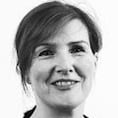Keeping bees is a bit like meditation, says photographer Kiernan Harnett. “They’re fascinating to keep. You have to take your time. If you rush and make noise they will try to sting you. Movements have to be slow and deliberate. That slows you down. You have to be present in the moment.”
It’s a pastime that is practical, in that you make the hives and you get honey, can be scientific and satisfies environmental concerns since because bees are a good barometer of what’s going on elsewhere in the environment, Harnett explains.
Harnett, who has always loved the outdoors, got into gardening to escape a life looking at a computer screen. From there he ventured into vegetable growing which tempted him into keeping hens, and when a fox annihilated his brood he decided to take up bees, at first as a way of pollinating the flowers and vegetables. “It was a natural progression,” he says. His eight-year old son Oisín has also joined his colony club.
Concern about the declining bee population worldwide has had some predictable spin-offs. The bee is a motif that's trending in fashion this season - though black and yellow is a difficult look to carry off, never mind with stripes. Films such as More Than Honey starring John Hurt, The Last of the Honeybees and documentary Hive Alive have all resonated with the public.
For Harnett, the holy grail is honey. He cooks peaches in it, bakes ham glazed in it and eats it on his morning porridge. He no longer uses sugar to sweeten his tea and coffee, preferring his home grown option.
A colony half the size of a normal hive, some 25,000 bees, costs about €200. If you’re smart you’ll buy two – that way if you have a problem with one you have a plan B, he says.
A hive will cost an additional €300 to buy but you can build yours from scratch as architect and bee boffin Gearóid Carvill of ACDB Architects did. “From a design point of view a hive is a beautiful object,” Carvill explains. What is known as a congested district board shaped hive, originally designed by the abbots of 23 Merchant’s Quay, Dublin, in 1884, has a heavy gabled roof and overlapping top to cope with a wet and windy climate. Its strip-lapped timbers are reminiscent of homes in the Hamptons.
Carvill wants to start building hives made of Irish timber in shades that really stand out rather than recede. “Bees love colour. You could go nuts and invite your local graffiti artist to tag yours. They are blank canvasses.” He has painted one a telemagenta hot pink RAL colour, the other an acid yellow.
Inside, it’s a different matter. Rather than open plan living bees like a cellular structure in very regimented dimensions. “A bee space is seven millimetres, any narrower and the bee won’t go in, any wider and he’ll build a comb across the excess,” Carvill says.
He believes it is the growing awareness of sustainability that is driving the interest in amateur bee keeping and it is also a return to the land.
But, surprisingly, cities are the perfect place to try and redress declining bee numbers, he explains. “There is an abundance of flora and in general we don’t use pesticides on our flowers.” He’s looking for rooftops to host hives, commercial buildings in particular. In London Fortnum & Mason has hives on its roofs painted in F&M livery. In Paris, another hive of activity can be found atop the landmark Palais Garnier, the Paris opera house.
You can keep bees in a space that is just six feet by six feet, he says, adding: “You can even create an apiary or bee yard on the flat roof of your garage or put them on your local allotment.” Those in Goatstown and St Anne’s Park house hives.
Fans of bee keeping range from Aristotle to Scarlet Johansson. For Carvill, part of the attraction is what he calls the “painter’s box” inside. “When you open up a honey box it is like looking at an artist’s palette, there are little dabs of colour, a chromatic display inside the hive of blues, pinks, yellows, because a bee will travel back to the same plant.”
To date Harnett has been giving away his honey to friends and family but he has harvested so much this summer that he’s going to start selling it in local shops. The local aspect is part of honey’s big draw, he says. “Local honey that hasn’t been pasteurised or heated has antibacterial qualities. If you live in Dublin 4, by eating Dublin 4 honey you can inoculate yourself against allergies such as hay fever.” He and Carvill are launching a range of honey from Dublin’s different postcodes. Between them they already have hives in Dublin 9, 14 and 8.
As well as honey, there’s beeswax, which has several uses from finishing furniture to unsticking drawers and making candles. Pollen, too is valuable - a current beauty must-have, it offers amino acids, B-complex and folic acids, and has attracted high profile fans that include Victoria Beckham. Irish Beekeeping: irishbeekeeping.ie; County Dublin Beekeepers Association: dublinbees.org; d9honey@gmail.com

















